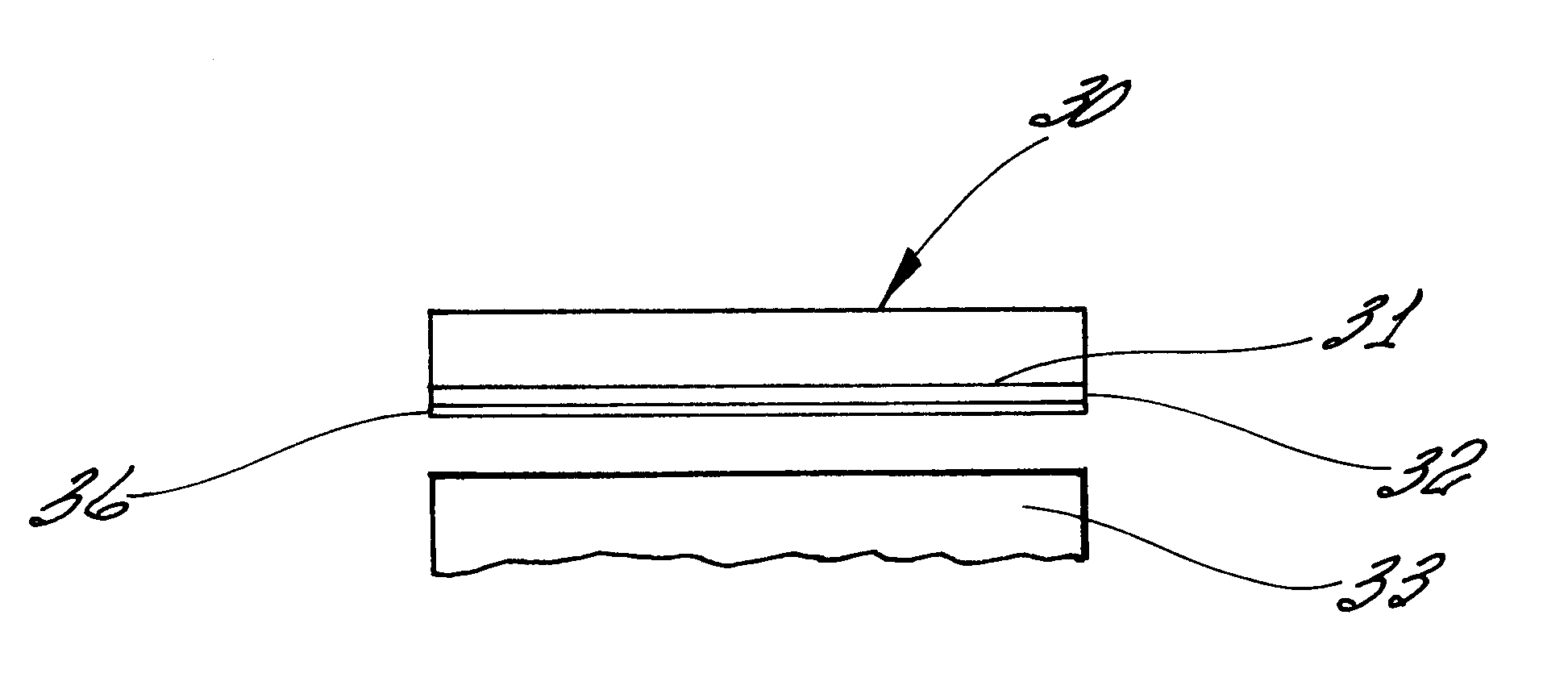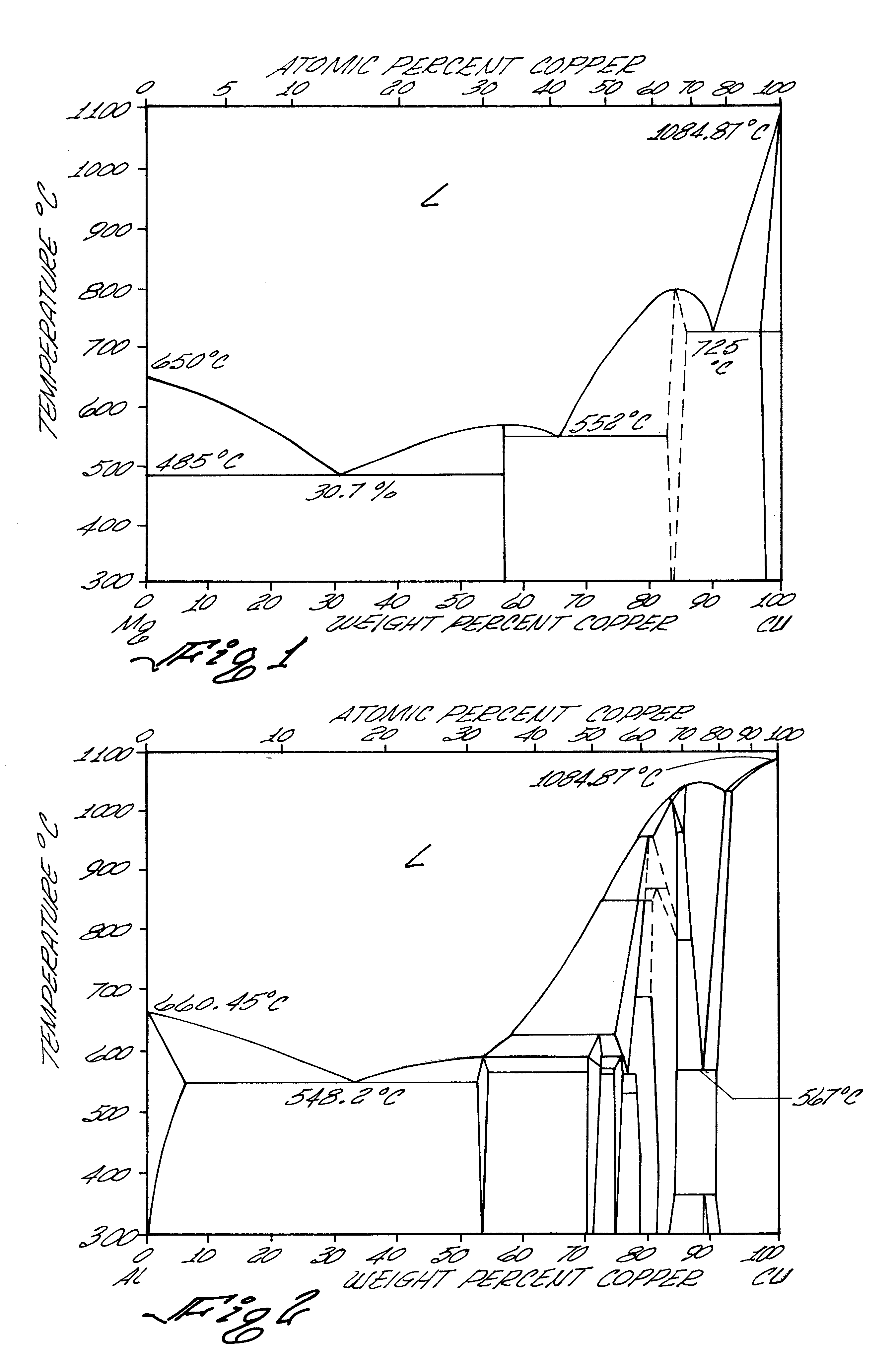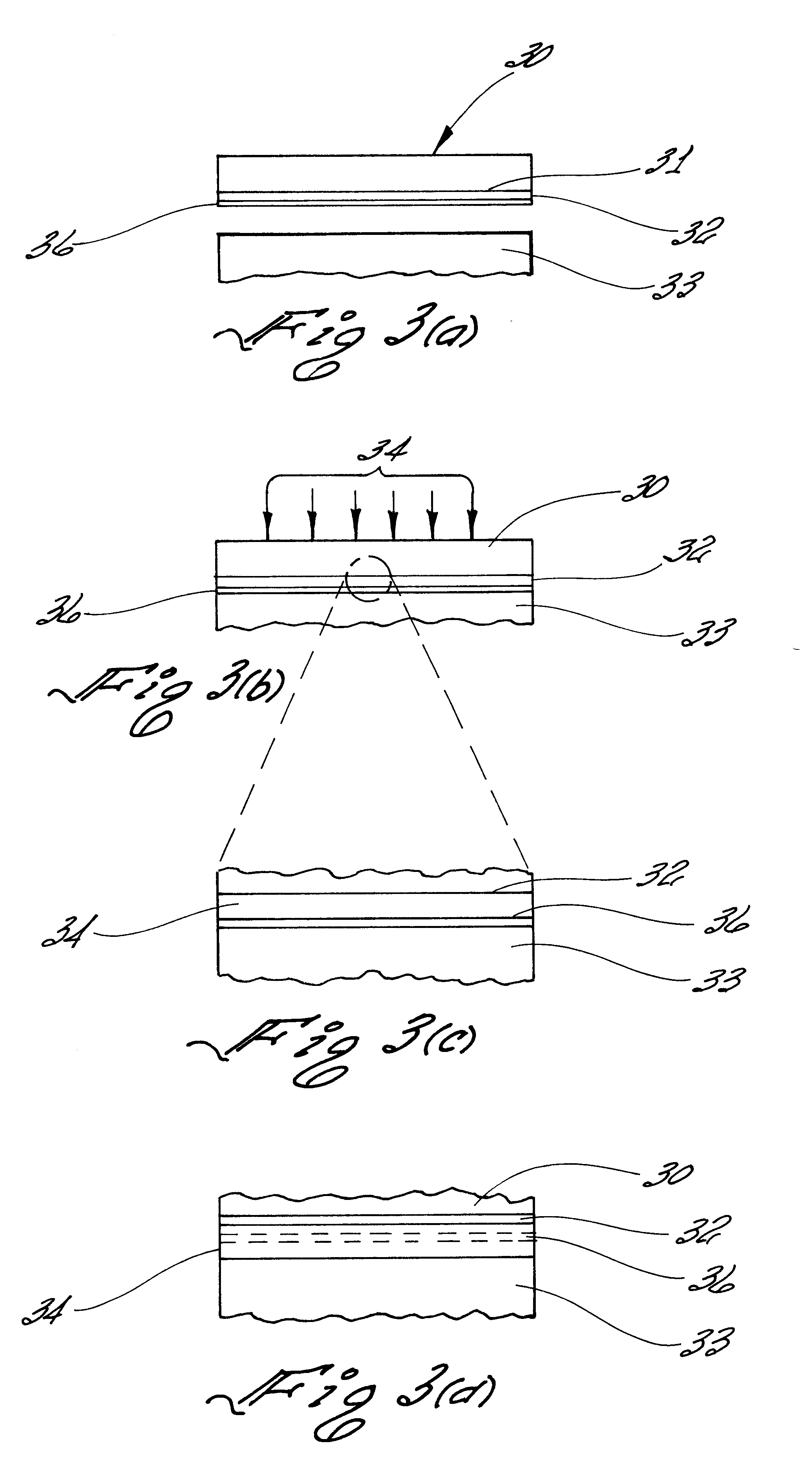Metal laminate structure and method for making
a technology of metal laminate and structure, applied in the field of laminate structures, can solve the problems of limiting the performance of prior art structures in other applications, driving a resonant response in the load beam, and inherent in prior art monolithic (i.e., non-laminate) structures
- Summary
- Abstract
- Description
- Claims
- Application Information
AI Technical Summary
Benefits of technology
Problems solved by technology
Method used
Image
Examples
Embodiment Construction
Two strips of 0.005" thick 301 stainless steel (SS) were plated on one side with a layer of copper using an electrolytic process. On both strips, the thickness of the copper plating was 5 microns. The strips were then sectioned to have a length and a width of 3" and 2", respectively. A 0.010" thick sheet of Mg dimensioned to have the same length and width as the strips was interposed between the copper-plated surface of the two strips and the structure placed in a vacuum hot press. Stainless steel platens measuring 3.75" in diameter were placed on both sides of the structure to ensure a uniform application of pressure to the metal strips. The chamber was then evacuated to a pressure of 50 microns of Hg and backfilled with gettered Argon to a pressure of 10" Hg. The process was then repeated to ensure that a majority of the oxygen was removed from the hot-press chamber.
The unconsolidated structure was heated to a temperature of 200.degree. C. for 0.5 hours to allow any adsorbed gasse...
PUM
| Property | Measurement | Unit |
|---|---|---|
| temperature | aaaaa | aaaaa |
| temperature | aaaaa | aaaaa |
| transition temperature | aaaaa | aaaaa |
Abstract
Description
Claims
Application Information
 Login to View More
Login to View More - R&D
- Intellectual Property
- Life Sciences
- Materials
- Tech Scout
- Unparalleled Data Quality
- Higher Quality Content
- 60% Fewer Hallucinations
Browse by: Latest US Patents, China's latest patents, Technical Efficacy Thesaurus, Application Domain, Technology Topic, Popular Technical Reports.
© 2025 PatSnap. All rights reserved.Legal|Privacy policy|Modern Slavery Act Transparency Statement|Sitemap|About US| Contact US: help@patsnap.com



